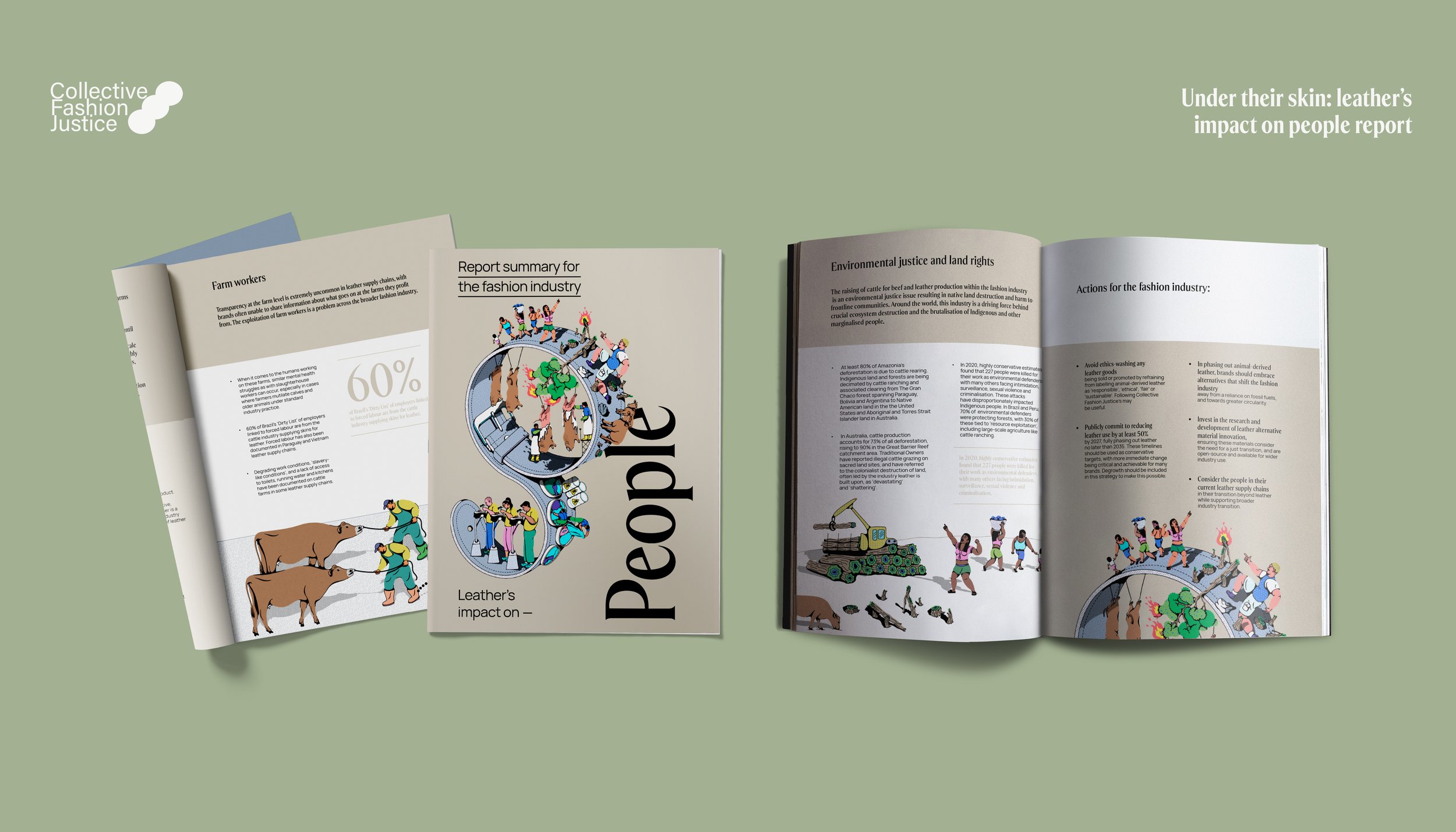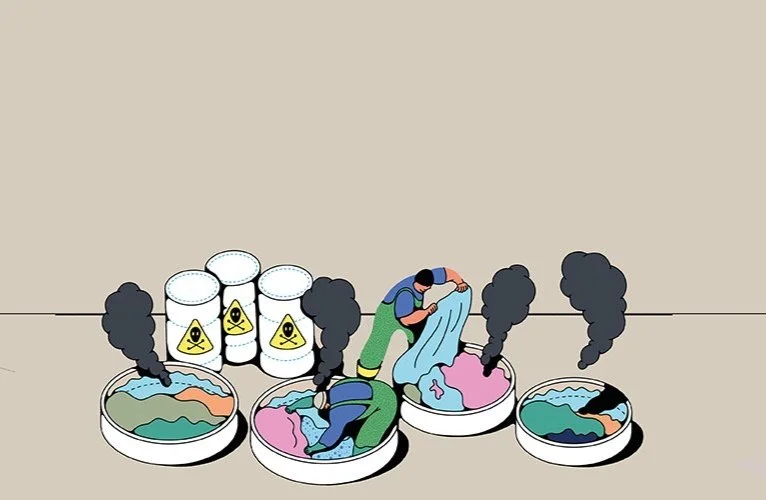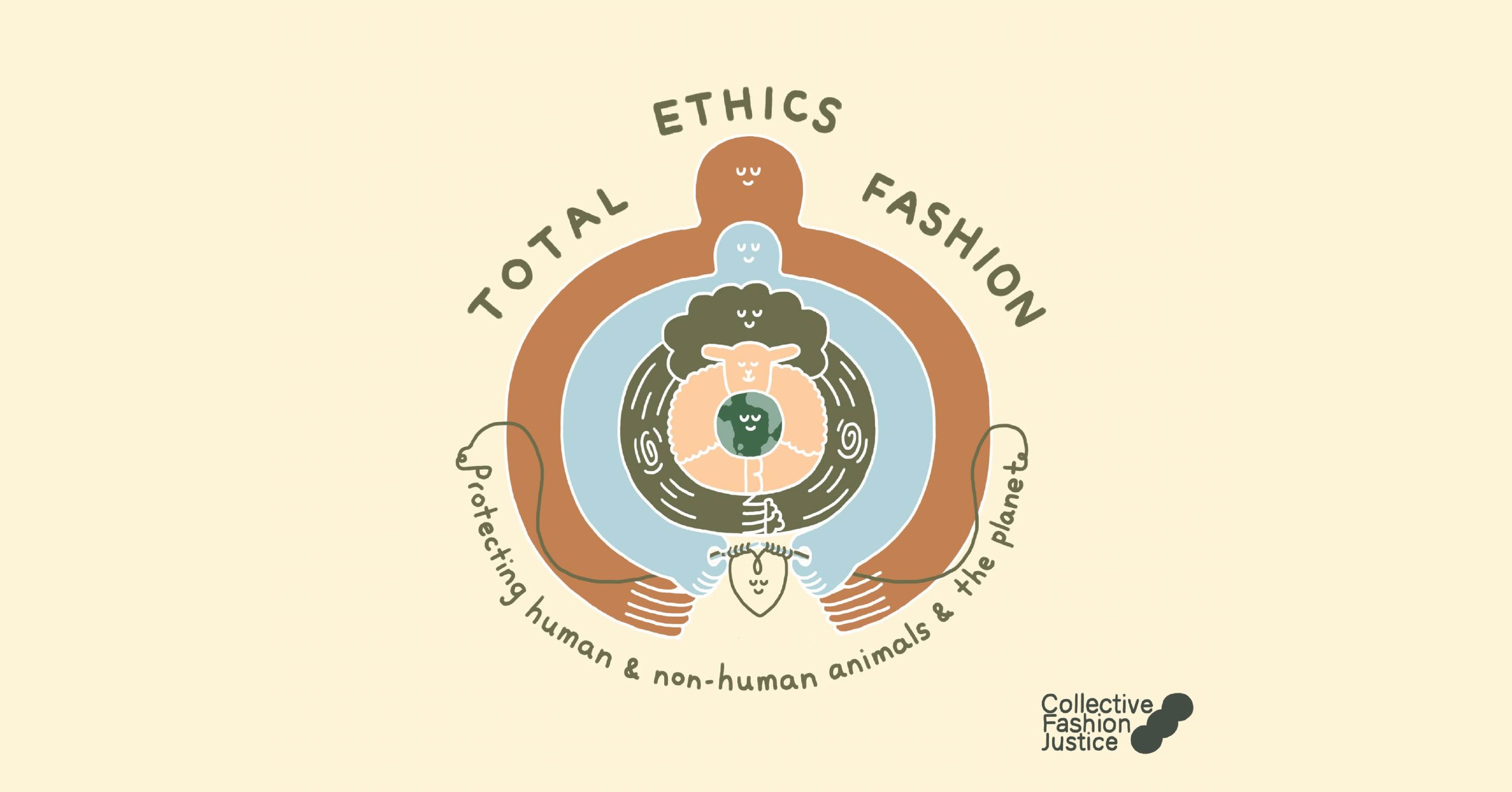How does leather production harm people?
Leather is not only a profitable co-product funding animal cruelty and major environmental destruction, but it also often harms people across the supply chain. Our new report series ‘Under their skin’ explores the interconnected harms of leather production, first looking at ‘leather’s impact on the planet’.
For all article references, check out our report, ‘Leather’s impact on animals’.
Across the leather supply chain, both working people and surrounding community members are routinely subject to hazardous conditions and exploitation. Between garment, tannery, slaughterhouse, and farm workers, health risks like cancer, respiratory disease, and perpetration-induced traumatic stress (PITS) are all too common. Meanwhile, in the communities surrounding tanneries and slaughterhouses, people feel the effects of air, land, and water pollution which lead to a lack of access to basic necessities like drinkable water and clean air. What’s more, leather production continues to impede on Indigenous land rights around the world.
Farm workers
At the beginning of all animal-derived leather supply chains are farms, and very often, feedlots and factory-farms. In a number of countries, including some top skin production countries, it’s been documented that cattle farm workers are subject to forced labour, unjust payment, and exploitation such as debt bondage and labour trafficking. In Brazil for example, ‘slave-like conditions’ have been recorded on these farms, and authorities note the high rate of labour injustices in the leather supply chain.
People working on cattle farms can also experience significant mental distress as a result of the harm they must inflict on animals as part of their work.. In leather supply chains, cows are routinely and legally subjected to cruel practices such as the cutting or burning off of their budding horns, searing hot skin branding without pain relief, and cow-calf separation. This alongside the task of sending animals off to slaughter can be disturbing, with one ex-farmer referring to it as ‘soul destroying’. While some brands aim to reduce animal suffering, for example by implementing policies that demand pain relief, leather production can never be free from animal exploitation and slaughter, or the impacts of these on people close to these.
Indigenous land rights
Rearing animals for the purpose of production is inherently inefficient, resulting in land degradation, as well as frequent land clearing and deforestation. While Indigenous people make up only 6% of the world’s population, they manage to protect 80% of remaining biodiversity. Despite their defense, deforestation of Indigenous land for leather production is an issue across the globe. In the Amazon Rainforest, at least 80% of deforestation is tied to cattle rearing for the beef and leather industries and illegal land seizures persist. People are often violently removed from their native lands under the threat of guns. Continued defense of these precious lands has lead to intimidation, surveillance, sexual violence, criminalisation, and death for Indigenous people in Amazonia. Violation of Indigenous land rights in leather supply chains also occurs across the Gran Chaco forest, on Native American as well as Aboriginal and Torres Strait Islander lands.
Slaughterhouse workers
Cows are trucked, shipped and walked long distances from farms to slaughterhouses in leather supply chains. In these abattoirs, a mental health crisis plagues many slaughterhouse workers. As so few people want to work in such confronting, gruelling work, vulnerable people of colour and those who are at a financial disadvantage are disproportionately represented in these working populations. Some refugees in Canada have even been promised ‘express entry’ into the country if they’ll work in slaughtehouses, as the industry struggles to find people willing to do the bloody work. Physically, slaughterhouse workers face a high risk of injury, working quickly with heavy machinery, sharp blades and large, heavy animals who kick and attempt to escape. But that’s not all.
Due to the inherent violence of slaughtering for a living, people doing this work often develop perpetration-induced stress disorder (PITS). PITS presents symptoms similar to post-traumatic stress disorder, such as drug and alcohol abuse, panic, depression, dissociation, and anxiety. Unlike PTSD, PITS develops as a result of causing significant trauma to someone else, referred to as the ‘psychological consequences of killing’ in academic writings on the subject. What’s more, a ‘violent spillover’ has been documented around many slaughterhouses, causing increased rates of violent crimes, including sexual assault and domestic violence, in surrounding communities.
Tannery workers
After carcasses are stripped of skins, those skins must be processed and tanned. Tanning exists to render skins inorganic, resulting in their inability to effectively biodegrade. People working in tanneries often suffer due to inadequate protection from carcinogenic and dangerous chemicals used in the process. Around the world, studies have shown tannery workers face heightened risk of numerous types of cancer. These workers also face bone and joint disease, neoplasia, dermatitis, and respiratory disease risks.
While child labour and worker exploitation has been documented across parts of India’s leather industry, even people in countries assumed to have better labour practices face injustices in tanneries. In Italy, despite the constructed prestige of the ‘Made in Italy’ label, a report titled ‘A Tough Story of Leather’ found that 48% of facilities in one of the main tannery districts used illegal practices. Over half of the workers present in the facilities were unregistered, with many speaking about unjust payment, injury and mistreatment.
Even when leather is given a ‘responsible’ label by the likes of the Leather Working Group, people working in tanneries, their safety and wellbeing are largely ignored. For Leather Working Group specifically, brands can achieve ‘gold status’ without any social auditing, and in cases where limited health and safety audits do take place, (which focus mainly on access routes, machinery guards, and emergency plans) brands can pass the audit with a score of just 50 percent.
Environmental racism and pollution
Often, wealthier nations like the United States choose to operate tanneries overseas where there are fewer environmental regulations in place protecting nearby communities. As a result, more leather is made in poorer Asian regions than anywhere else. Communities around these tanneries are consequently exposed to air, water, and soil pollution which harm their health, as well as the health of their crops and food systems. In China for example, the government has referred to ‘cancer villages’ where people are diagnosed with the disease at disproportionately high rates, owing to their proximity to tanneries and other industry. In India, children born with life-long health conditions and deformities, as well as people around tanneries developing high rates of asthma, skin conditions and other ill-health have all been documented.
Similarly, slaughterhouses around the world – including in top cow skin production countries in both poorer and wealthy nations, such as the United States and Brazil – are often poorly regulated in relation to waste disposal. As a result, waterways in some communities have become sickly and dangerous, as blood and bio-hazardous waste is dumped.
Garment workers
Workers across the fashion industry continue to be chronically underpaid and overworked, not only in leather goods production, but in a huge portion of fashion production, no matter the material used. People who sew clothing, bags and shoes for a living are continually made to work in unsafe conditions for poverty pay.
These issues are present across most parts of the fashion industry, from luxury brands like Burberry to ultra-fast fashion giants like SHEIN. For example, Samipell Srl, a sub-contractor factory making leather bags for Burberry, was found to be regularly exploiting immigrant workers. The luxury brand retails their calfskin leather bags for up to $3,150, while workers at Samipell Srl were being paid just over 3 euros per hour, or less than $3.20 USD, while working up to 14 hours per day. Noting this, it’s important to remember that just because a product costs more, this does not mean the person who made it was paid or treated fairly.
Help to create a total ethics fashion system
Leather production is tied to high risks of labour injustices, as well as some human harms which cannot be separated from the cruelty inherent to materials derived from slaughter. Too, the environmental impacts of leather production are interwoven with human rights violations. The best way to avoid contributing to these serious issues is to opt out of purchasing new animal-derived leather. Instead, look for garments, shoes, accessories, and other products made with more ethical and sustainable animal-free materials. Too, consider if you really need to buy anything new at all, with so many pre-loved goods out there.
Importantly, we should all remember that we can create change by using our voices, not only our money. You don’t need to buy new ethical and sustainable products to help shape the future of the fashion industry. Try asking brands that use leather, but that you appreciate aesthetically, what their plans to move beyond leather and towards just, next-gen materials look like. While as individuals we may feel powerless, when we act together, we can create radical and positive change towards a fashion industry that prioritises the life and wellbeing of people, our fellow animals, and the planet before profit.





